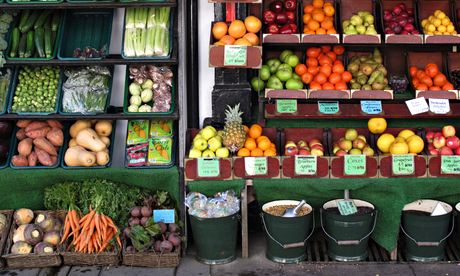
Five portions of fruit and vegetables a day may no longer be enough, according to new research from scientists at University College London.
In the research, having at least seven portions of fresh fruit and vegetables a day was associated with a 42% lower risk of death from all causes. There was also a 25% lower risk of cancer and a 31% lower risk of heart disease or a stroke. Vegetables seemed to offer more protection against disease than eating fruit.
At a time when the World Health Organisation is warning that child obesity "is in danger of becoming the new norm", teaching about healthy eating and exercise in schools is absolutely essential. Here's our collection of lesson resources to help your students develop habits that will last a lifetime.
The Great Grub Club is a resource from the World Cancer Research Fund that contains a wealth of ideas for teaching primary students about healthy eating. These include an assembly with teacher's notes, and a fact sheet about the importance of eating five-a-day. There are also child-friendly recipes including funny face pizzas and pirate party food.
What makes a good breakfast?, a resource from the charity Magic Breakfast, encourages students to think about the health benefits of starting the day with a good meal. The resource includes a breakfast fact sheet, diary and poster. Pupils can examine different breakfasts in terms of their sustenance and then consider a range of questions about the importance of breakfast.
Love Your Lunch is a resource from the British Nutrition Foundation designed to teach primary students about what makes a healthy lunch. In one activity, pupils cut out pictures of the ingredients used to make different dishes. They sort these on to a worksheet showing the different food groups then discuss whether each dish represents a balanced meal. Other ideas include designing a dish for the school lunch menu. The resource is accompanied by a colourful poster perfect for use in a dinner hall.
Explore the idea of a balanced meal further with this poster showing the Eatwell plate. Designed by the Food Standards Agency, the plate shows the types and proportions of foods needed for a healthy, balanced diet. Can students name the five food groups and give examples from each one? The poster includes eight tips for healthy eating, which could promote some cross-curricula work by tasking students to write a leaflet or make a presentation on the advice. Check pupils' understanding with this worksheet from Grain Chain or this healthy meal worksheet by PrimaryLeap.
The British Nutrition Foundation also has Food Route, a board game about diet and health, shopping, cooking and food safety. Players move around the board by answering questions that are differentiated for seven to nine year-olds and 10 to 12 year-olds. The rules are here. As a follow-up activity, ask groups of students to design and make their own healthy eating board game. Secondary pupils could create a set of question cards suitable for their own age group.
Encourage students of all levels to explore the idea of nutritional value with this set of display cards showing the amount of energy and nutrients provided by 100g of 10 foods including bread, chocolate, eggs and tomatoes. Use the cards to introduce the concept that protein, carbohydrate and fat provide different amounts of energy, or to calculate the energy and nutrients provided by different portion sizes.
Another set of cards from the British Nutrition Foundation contains photographs of four different meals. Ask students what changes they would make to the type or amount of ingredients and the cooking method to create a healthier meal. The healthy eating ideas are summarised in this poster.
The Right Route for a Healthy Diet is one of a collection of case studies that focus on different aspects of the energy and nutrients found in food for use with secondary students. It examines the role two work experience students played in improving the meals in a staff canteen and looks at the diets of a vegetarian and a middle-aged business man. Each case study includes a set of questions for students to answer.
The British Nutrition Foundation has a further range of games and activities on its Food: A Fact of Life website. The latest of these is a nutritional analysis tool for secondary students. The tool is a useful platform for teachers to demonstrate how changes to the selection and weights of different ingredients, foods and drinks may affect the energy and nutrients provided by a recipe or diet.
For more ideas, check out our How to teach articles on positive body image and teaching children how to cook, which features some exclusive resources from Jamie Oliver.
Follow us on Twitter via @GuardianTeach. Join the Guardian Teacher Network for lesson resources, comment and job opportunities, direct to your inbox.

